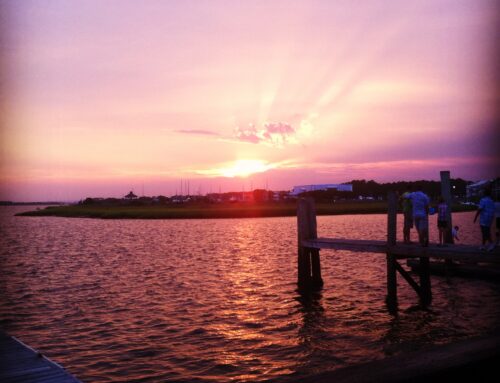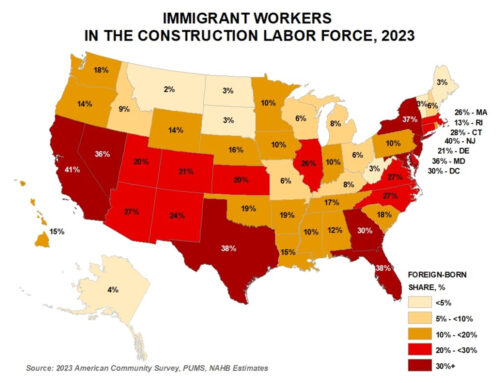There is a Difference featuring Kevin Smith, Co-Founder and Chairman of SPINE
January 12, 2024
We are thrilled to announce our partnership with SPINE to provide the home and building industry with the finest cinematic quality renderings, 3D animations, and virtual and augmented reality experiences. This architecturally trained team is led by architect Kevin Smith, who founded and continues to lead the team at SPINE. It is our pleasure to introduce you to Kevin.
My name is Kevin Smith. I’m the Chairman and the co-founder of SPINE. We’re an advanced visualization studio based in South Florida. The story of SPINE really began back in 1996 while I was attending Virginia Tech to receive my master’s degree in architecture. While I was preparing for my thesis defense to graduate, my roommate invited me for drinks to join him and a friend that was in town who was visiting from Hawaii and had broken his back cliff diving. After numerous surgeries, they had inserted titanium plates and screws into his vertebrae & as a result, he was able to miraculously recover and walk again. His X-ray clips were scattered all over the bar, which led to some very creative discussions about the fusion of technology with the human body, how the spine is connected to the brain, provides stability, flexibility, and each vertebra is interconnected and dependent on one another for everything to function properly.
The word SPINE kept coming up in our discussion and we started to make a connection with how it served as a metaphor for the design process. It was at that time when I stated that if one of us had the opportunity to open up a company down the road, that the word SPINE would be given serious consideration. Shortly after this gathering, I graduated with my degree in Architecture and was hired at a company called Spillis Candela & Partners, which was later acquired by AECOM, one of the largest architectural companies in the country. I started up what was called the Advanced Technologies division, and this is where I met my two future business partners (Johann Beckford & Eddie Leon). We basically took care of all the projects that required some level of 3D visualization.
At that time, we were producing just renderings & animation trailers, or what we like to consider traditional 3D assets. I worked at AECOM for three years and afterwards, was offered a position to become a computer director at the School of Architecture at Florida International University. And it was here where I decided to basically research ways to take my expertise and expand my service offerings. In 2003, I teamed up with my two partners to establish what we called SPINESTUDIOS. This was a visualization studio that was based in South Florida (actually in Miami). It was originally set up as an umbrella company that could have many different disciplines all centered around architectural design. We started with 3D visualization and soon discovered that this is what really excited us the most. We changed our name to SPINE 3D & focused our energies on targeting the real estate and AEC industries. Eventually we expanded into every market sector, and we decided to pare the name down to just SPINE. What started out as a metaphor for design, the name SPINE has also evolved into an acronym, which we refer to as SPatial INteractive Experiences. Our architecturally trained team specializes in the creation of visual assets for design, marketing, and sales. These assets include 3D modeling, rendering, animation, video production, AR, VR experiences, and even video production.
How are the capabilities in the products of SPINE different and better than the renderings, animations and AR, VR that we’ve seen to date?
While there are lots of talented artists and studios who offer similar services, SPINE has some special attributes that set us apart & make us special. First, we have been in business for 20 plus years, and we have a proven track record. We’ve worked with clients and projects in just about every market sector. Our largest client to date is actually Norwegian Cruise Line. For them, we have constructed digital twins of seven cruise ships and two port destinations.
We also use a project management platform called Basecamp. This really ensures smooth communications throughout the production process. It holds our clients accountable for providing us with all the necessary information to complete the deliverables and approvals from stage to stage. It also holds our team accountable for keeping things on schedule and showing the various iterations of the work prior to completion.
We really focus our energies on delivering high fidelity visual assets for all of our projects. In addition, we are specialized in using the UNREAL Engine to deliver VR experiences for our clients.
What is Unreal Engine?
The Unreal Engine is a truly amazing software platform. It’s used quite a bit in the film and video gaming industries. When I taught at the Florida International University School of Architecture, I was always fascinated how gaming & film studios were leap years ahead of the AEC industry. When they started to offer this platform to architects, we started to experiment with it. For the first couple of years we were using it, I did not feel like we could deliver the level of quality we were producing with 3DSMAX & VRay. The technology has evolved substantially & now we’re using the UNREAL Engine to produce pretty amazing VR experiences where you can walk clients through projects in real time, similar to a video game and the quality rivals what we can produce with our traditional software applications.
How can a ceilings and walls manufacturer use AR and VR?
That’s a good question. With augmented reality, I think it’s a great type of technology that will allow customers to place digital representations of their products in the real world. It can be utilized to test scale, materiality, and to share on social media. We had produced an AR project for Marvin Windows a number of years back (it was when augmented reality was in its infancy). They had a new sliding door product and wanted us to be able to create some type of QR code at a trade show where you could target with a mobile device with a camera, place the sliding door on an actual wall, open and close it, and even control/swap out the background environments.
I can envision a scenario where you can give an architect, an engineer or a customer the ability to scan an actual product out of a catalog or off of their website & drop it in their real world. It can be annotated, where you could click on different hotspots to learn more details about the product. The only real limit with augmented reality is that you have to optimize the geometry, which limits the fidelity. With virtual reality or VR, we can really push the limits of interactivity, immersion, & achieve a much higher level of quality. We have utilized this technology to design/build a virtual showroom in order to extend what can be shown at a trade show or in a physical showroom. You’re only limited by your imagination.
One of my biggest frustrations when I would set up a booth at AIA or some of these other trade shows, I could only afford to get a 10 x 10 booth. Imagine you want to demonstrate/show off a myriad of different products. Displaying a video can be effective but imagine giving a user the ability (via headset, joystick, or keyboard/mouse) to navigate through an entire warehouse or an entire city block virtually. There are really no limits to what you can do. It really expands your square footage and gives you all kinds of creative possibilities to show your products in a creative way.
How about other building products companies? Please share some examples how they can use your services.
First and foremost, the company that really kind of sparked everything with SPINE when it came to working with building product manufacturers was Hubbell Lighting. I used to exhibit at the AIA Convention & was very naive and close-minded (I was really just focusing my energies on marketing to architects). Since I was an architect myself, I felt like it was a great opportunity to get in front of architects and share my services.
I walked by a booth from Hubbell Lighting and the Director of Marketing was exhibiting her lighting products. They had a photograph on the back of their booth and it showed one of their lighting products staged in an office environment. When she looked at my catalog, she said, “Can you create something like this digitally to stage my products?” She also shared the challenges they were facing. Every product that they would come out with would be photographed within their warehouse. It was a conference room, where they would have to put in new carpet, new tile, paint it differently, install their fixtures, have it catered, break it back down (rinse & repeat).
For some photo shoots, they would actually have to obtain permits on buildings that were still under construction. There were security issues when they were dealing with hospital buildings and schools. This led us to start producing what we refer to as application renderings. It saves companies like Hubbell and a whole number of other clients lots and lots of money and time because we’re able to construct virtual representations of any space (exterior or interior) to accurately stage their products. For a lighting company like Hubbell, they’re also looking at accurate representation of their lighting. Our software is very sophisticated, allowing us to match the wattage, the lumens, the throw of the light, the coloration, etc. We can also match the time of day based on latitude and longitude if we’re producing exterior shots, which really opened up the door for SPINE when it came to working with building product manufacturers.
At the AIA Convention, I was surrounded by building product manufacturers. It made me realize that these were new types of clients that could benefit from my services. Now, we’re working with lighting & furniture companies, kitchen manufacturers & more to virtually stage their products. Once we’ve created these digital environments, we can offer them other solutions such as 3D animation trailers, 360º Online Tours, virtual showrooms, & augmented reality activations. Simply stated, you’re not starting from scratch. We can leverage these assets and create a whole myriad of other product offerings. That was my first customer experience when it came to building products, which was a real game-changer for SPINE.
Another really cool experience was with a company called LX Hausys, a subdivision of LG. When I think of LG, I think of appliances, electronics, & televisions. It turns out that they have a subdivision (LX Hausys), which specializes in kitchen countertops, bathroom countertops, & flooring. Their VP of Marketing reached out to me and was looking for us to take photographs of an existing kitchen and see if we could just take photo samples of their materials and swap them out in some kind of interactive way on their website. After listening to the challenges they were facing and really trying to understand their needs, we came up with a concept to create a virtual showroom. It consisted of four kitchens, four bathrooms, a lobby, & slab viewing showroom.
Using reference photos, we designed & constructed each of the bathrooms & kitchens. It also had a separate showroom where you could walk up to the slabs of stone at full scale and compare them side by side. From any device (phone, laptop, or desktop) the end user can walk around in 360º & design / configure their own kitchen and bathroom. And it was such a success, we actually put an elevator in the lobby where they can add different floors for future phases of development. They also had us convert this interactive experience into an immersive VR Experience that they put on display at trade shows, as well as in their actual headquarters. That was a really, really cool project for us.
The last project I would like to talk about is one we created for ASSA ABLOY. This company specializes in creating door opening solutions for a variety of market sectors. These solutions are very secure & high tech (i.e. scanning your retina, fingerprints, etc.).
They had come across an experimental project called Expo 2000X we had created for our website, which was a virtual city. When they saw that, it really sparked their marketing team to want to create what they referred to as “ASSA ABLOY city”. They wanted to create this interactive 3D / VR experience where you could walk around to learn about all their products and all the various applications. After assessing their needs & proposed budget, we talked them into creating a scaled down virtual campus. We started with a university building for college campuses. They had no idea what this building would look like & had no drawings. With our architecturally trained staff, we designed a university campus for them from reference photographs, and it came out really amazing.
The end user (customer, architect) can click on all the door hardware throughout the project & learn about the features that each has to offer. If they choose to add this on at a later stage, it has AR capabilities to put the actual hardware onto doors in the real world. Since the first phase, we have already added a K-12 building & a hospital. This is something that they can continually revisit & scale as needed. And again, it’s all about being able to leverage the money that they’ve spent to create their marketing materials and coming back later on, adding new products, adding other phases to their project if they have a different market sector they have to serve. The possibilities are limitless.
How does your being an architect bring you and your clients closer to the customers – trade and consumer?
My architecturally trained staff understand how to read, translate drawings, and specifications. Most of the 3D studios out there don’t have architectural backgrounds. they’re simply artists. While they might be talented, they don’t speak the language of architecture. Our experience in architecture lends itself well to having a clear dialogue with product manufacturers, architects, & engineers. One of the most important components of being an architect is that we can assist with design. And there are so many clients like the one I just shared with you (ASSA ABLOY) that come to SPINE with an idea, but they have nothing that’s drawn out. We can help take these ideas, these concepts, and make them come to life.
But some of the most exciting projects that we work on at SPINE is where we’re also able to use plenty of artistic license. It’s an exciting, liberating experience, not just for our team, but also for the client.
Thank you, Kevin.
There are numerous opportunities to use cinematic quality renderings, animations, and VR and AR experiences in building products sales and marketing. SPINE provides building products manufacturers with one of the most important resources they need – time. You now have the ability to showcase their new products in a truly realistic manner at the time of their launch. No more waiting until you find a customer partner to install the product for photography.
You no longer have to settle for cartoon-like renderings, 3D animations, and VR and AR experiences. SPINE provides renderings, 3D animations, and VR and AR experiences that mirror the finest photographs and cinematography available.
We invite you contact us by email at Shawn@DraperDNA.com to schedule a time to experience SPINE and discuss how we can bring the finest level of renderings, 3D animations, and VR and AR experiences to your work.





